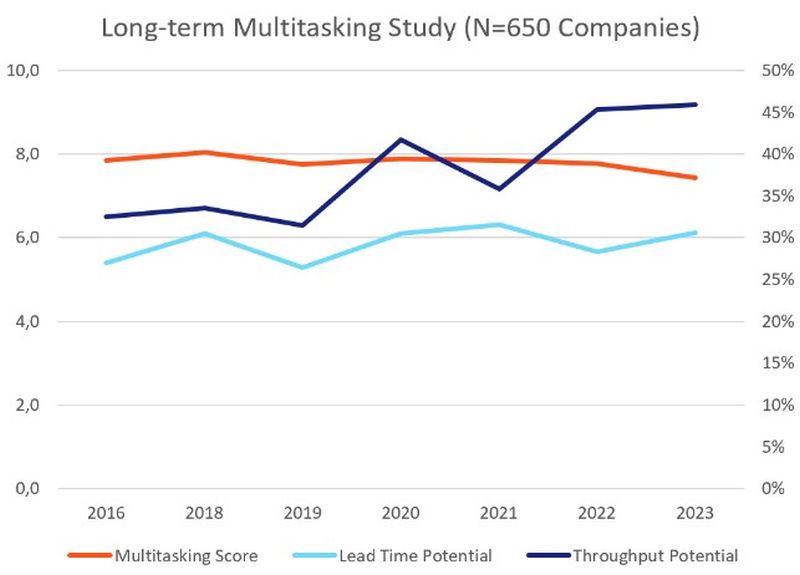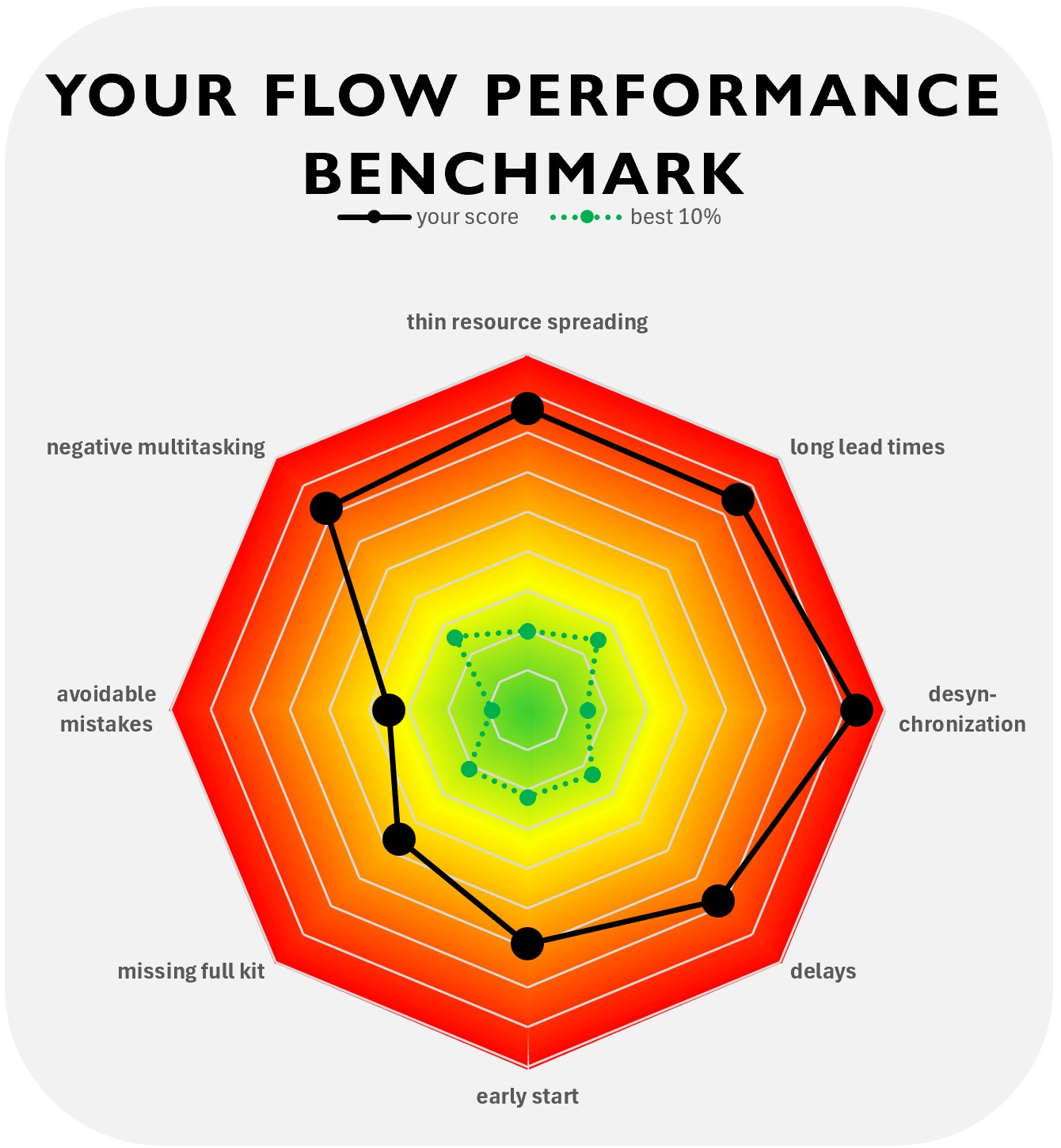
The Flow State in Organizations: Unlocking Your Team’s Potential
Imagine stepping into a room full of energy and excitement. The hum of conversation is contagious, but it’s not just noise. It’s the sound of people in flow each person fully immersed in their tasks, collaborating effortlessly, ideas flowing freely. Work isn’t just getting done; it’s being done well. Productivity soars, engagement is high, and everyone seems to know what to do next without needing to check a plan or wait for instructions.
This is the organizational flow. And while it may sound like an idealistic dream, it’s more achievable than most of us realize. The key is understanding how to create the right conditions for flow, not just for individuals, but for teams and organizations as a whole. This article explores the concept of organizational flow, the forces that either support or block it, and what you can do to bring more of it into your workplace.
Chasing Flow: The Holy Grail of Knowledge Work
Flow isn’t a new concept—it was popularized by psychologist Mihaly Csikszentmihalyi in the 1970s as a state of deep focus where people feel and perform at their best. When in flow, you lose track of time, distractions fade away, and your work feels almost effortless. For knowledge workers—whose value lies in their ability to solve complex problems, innovate, and process information—flow is critical. But in today's complex, fast-paced work environments, achieving flow is harder than ever.
But it not just about mental flow – real organizational flow covers also the three other flows -the flow of work, the flow of information and as result the cash flow.
With the rise of Agile methodologies, organizations hoped to find the secret sauce for inducing flow at scale. Agile promised to bring flexibility, adaptability, and focus, with tools like Scrum and Kanban designed to reduce chaos and multitasking. Yet, despite all the enthusiasm surrounding Agile, the data on whether it truly fosters flow remains unclear.

The Multitasking Myth
In 2016, we conducted a groundbreaking study looked at multitasking in knowledge work, and its results were illuminating: organizations where employees multitasked less saw significantly better results than those where workers were constantly pulled in multiple directions. In fact, multitasking emerged as a key indicator of whether an organization was in flow or out of sync. The less multitasking, the smoother the workflow, and the higher the throughput.
Agile methodologies promised to address this by breaking work into manageable chunks. Yet the same study, revisited over the years, and found something surprising: despite Agile’s widespread adoption, organizations were still plagued by multitasking. In some cases, it had even increased. And even the perceived potential for improvement raised over the years.
So, what went wrong? The tools and methods were supposed to help us focus, yet the data showed no significant improvement in flow.
Unmasking the Flow Killers
If Agile alone isn’t the silver bullet, what is stopping teams from achieving flow? One answer lies in the disconnect between theory and practice. Many organizations adopt Agile methods without fully committing to its principles. They might hold daily standups or work in sprints, but they don’t create the necessary conditions for deep focus.
Symptoms of a lack of flow are everywhere: long lead times, frequent mistakes, constant firefighting, early starts with delayed finishes, and, of course, multitasking. These issues aren’t just frustrating—they’re indicators of deeper systemic problems. They point to an environment where people are constantly being pulled out of flow.
In contrast, organizations that foster flow see shorter lead times, fewer mistakes, and a greater potential for throughput. The difference? These organizations take a more scientific approach, basing their processes on physical laws that can be measured and proven.
Little’s Law and Goldratt’s Law: The Science of Flow
The laws governing organizational flow are surprisingly simple yet powerful. Little’s Law tells us that lead time (the time it takes to complete a task) is directly related to the number of things being worked on at any given time and the throughput (how many tasks are completed over a period). The fewer things you try to do at once, the faster you can complete them.
Goldratt’s Law of Throughput, on the other hand, focuses on bottlenecks. To maximize the throughput of your entire system, you must focus on the slowest part of the process—your constraint. If you can identify and eliminate that bottleneck, everything else is getting more productive too.
Both laws highlight a crucial point: the path to organizational flow isn’t about adopting the latest trendy methodology. It’s about understanding and optimizing the underlying physics of how work gets done. This means reducing multitasking, identifying bottlenecks, and ensuring that each person can focus on one thing at a time.

The DolphinStudy: Your Path to Organizational Flow
To understand how your organization can achieve flow, you need data. That’s where the DolphinStudy (aka “State of Organizational Flow Report”) comes in. First conducted in 2016, the study looks at the real-world conditions that either help or hinder flow in organizations. It asks knowledge workers about their experiences with multitasking, delays, mistakes, and other symptoms of poor flow. And maps these on eight scales of flow performance.
The findings have already been eye-opening, revealing that many companies, despite adopting Agile, are still missing the mark. Multitasking remains rampant, lead times are still long, and bottlenecks persist. But the study doesn’t just highlight problems—it also points to solutions.
By participating in the State of Organizational Flow Report 2024, your organization can benchmark itself against more than 650+ others. You’ll gain insight into how you score on key indicators like multitasking, lead time reduction potential, and throughput. More importantly, you’ll get practical feedback on how to improve.
Participating in the is easy and for free. Just request your individual link for your organization.
Weitere Inhalte
Kennst Du schon LeanLexicon?
-
LeanWissen von A-Z
-
Begriffe, Konzepte, Modelle
-
Alles an einem Platz
Weitere Inhalte auf LeanPublishing

Transformative Leadership - Integration of Intelligence and Creativity of all People on Earth in global transformative Processes via Language in Symbiosis with AI
A glance into the future Transformative science1 takes the realization seriously that the very act of observation changes the relationship between observer and observed.The limits of our …

The Final Curtain ... Folge 217
Ein Schattenim Lebenvergeht Und bleibtdennochbestehen

KataCon Europe
If you are engaged in Lean, Agile, or Toyota Kata methodologies, the KataCon Europe conference on December 3-4 is tailored for you. Organized by the Lean Forum Sweden, this compact conference …

* Brand-new * A LEAN Graphic Novel on “Toyota Improvement Kata”
Engaging the Team at Zingerman's Mail Order Really? A comic about Lean management and improvement? Yes! Engaging the Team at Zingerman’s Mail Order: A Toyota Kata Comic Read about it here!



Kommentare
Bisher hat niemand einen Kommentar hinterlassen.
Kommentar schreiben
Melde Dich an, um einen Kommentar zu hinterlassen.
Teilen